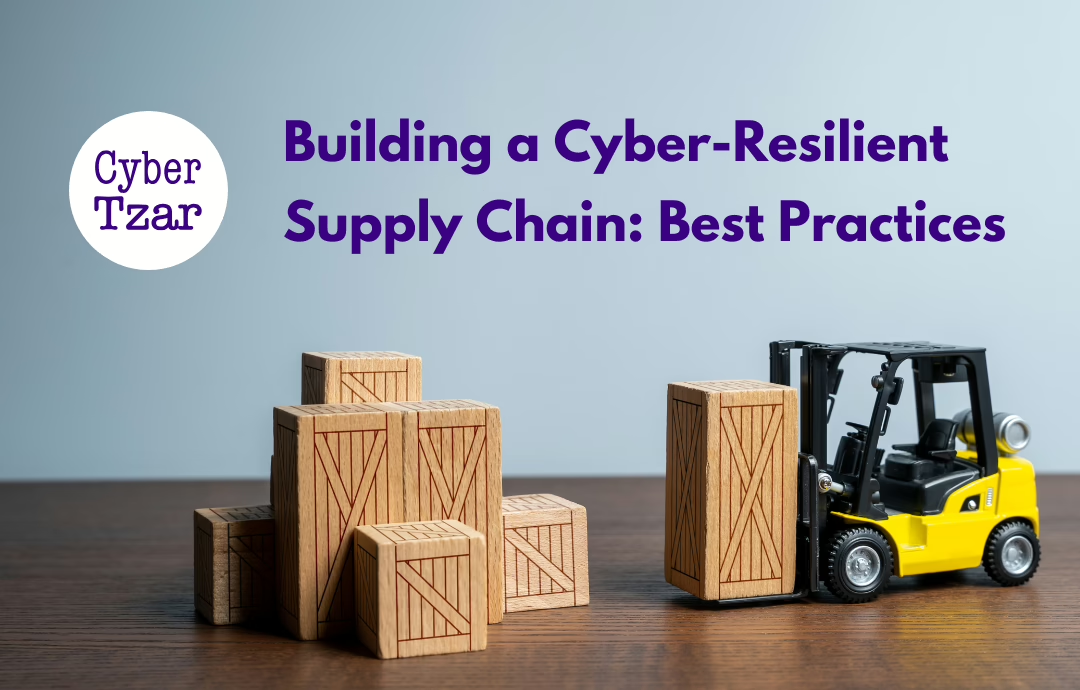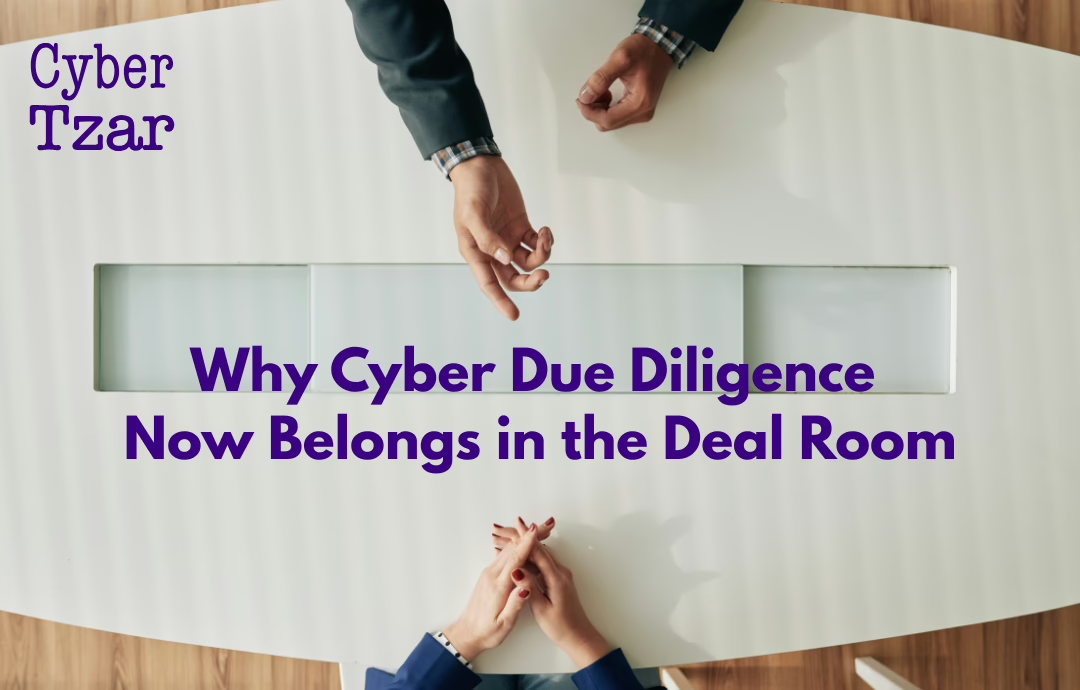Introduction
Modern businesses depend on complex, interconnected supply chains, with third-party vendors, cloud providers, software suppliers, and logistics partners playing critical roles. However, this reliance introduces significant cyber risk—a single weak link can compromise an entire organisation.
Supply chain attacks have increased dramatically, with cybercriminals exploiting vulnerable suppliers to infiltrate larger targets. High-profile incidents, such as the SolarWinds breach, Kaseya ransomware attack, and Log4j vulnerability, have shown that supply chain security is now a board-level priority.
This article explores why supply chain cyber resilience is essential, key cyber risks businesses face, and best practices for securing third-party relationships.
1️⃣ Why Cyber Resilience is Critical for Supply Chains
📌 62% of cyber breaches originate from third-party suppliers.
📌 Ransomware groups are increasingly targeting supply chains to cause widespread disruption.
📌 Regulators are tightening security requirements—businesses must demonstrate supply chain risk management.
💡 A business is only as secure as its weakest supplier—cyber resilience must extend across the entire supply chain.
2️⃣ The Biggest Cyber Risks in Supply Chains
🔹 1. Third-Party Data Breaches & Vendor Security Weaknesses
Many businesses share sensitive data with suppliers, but not all vendors follow strong cybersecurity practices.
Common Risks:
- Vendors storing customer data insecurely, leading to breaches.
- Suppliers using weak authentication, allowing attackers to gain access.
- No incident reporting requirements, leaving businesses unaware of security breaches.
🛡️ How to Reduce Risk:
✔ Vet suppliers for cybersecurity compliance before signing contracts.
✔ Ensure vendors encrypt data at rest and in transit.
✔ Require vendors to notify you of security incidents immediately.
🔹 2. Ransomware & Supply Chain Disruptions
Cybercriminals use ransomware attacks to cripple suppliers, disrupting entire industries.
Common Risks:
- Attackers use third-party IT providers as entry points into corporate networks.
- Manufacturers and logistics firms are targeted to disrupt production and deliveries.
- No business continuity plan, leaving companies unable to recover quickly.
🛡️ How to Reduce Risk:
✔ Require suppliers to implement ransomware protection measures.
✔ Ensure suppliers have robust backup and disaster recovery plans.
✔ Segment networks to prevent supply chain breaches spreading.
🔹 3. Compromised Software & Third-Party Code Dependencies
Many organisations use third-party software, APIs, and open-source libraries, but these can be exploited by attackers.
Common Risks:
- Compromised software updates introducing malware (e.g., SolarWinds attack).
- Unpatched software vulnerabilities exposing businesses to exploits.
- Malicious open-source libraries being unknowingly integrated into company systems.
🛡️ How to Reduce Risk:
✔ Monitor third-party software for vulnerabilities and apply patches immediately.
✔ Use software composition analysis (SCA) tools to track dependencies.
✔ Require software vendors to follow secure coding and patching practices.
3️⃣ Best Practices for Building a Cyber-Resilient Supply Chain
Businesses must take a proactive approach to managing supply chain cyber risks. Here’s how:
✅ 1. Conduct Cybersecurity Due Diligence on Suppliers
Before onboarding a supplier, businesses should assess their security posture.
📌 Key Questions to Ask:
✔ Does the vendor comply with Cyber Essentials, ISO 27001, or NIST standards?
✔ How does the vendor store and protect sensitive data?
✔ What incident response measures does the vendor have in place?
✔ Has the vendor experienced a cybersecurity breach in the past 12 months?
💡 Security assessments should be part of vendor selection, not an afterthought.
✅ 2. Implement Security Requirements in Vendor Contracts
Supplier contracts should clearly define security expectations and accountability.
📌 Key Contractual Clauses:
✔ Data protection obligations (who owns and secures what data).
✔ Breach notification requirements (vendors must report incidents within 24-48 hours).
✔ Right to audit clause (ensuring businesses can assess vendor security).
✔ Secure software development policies for software suppliers.
💡 If a vendor refuses to accept security requirements, reconsider the partnership.
✅ 3. Continuously Monitor Third-Party Risks
Vendor security changes over time—continuous monitoring is essential.
📌 How to Monitor Vendors Effectively:
✔ Use automated risk monitoring tools to detect security issues.
✔ Require vendors to provide regular security reports and audits.
✔ Conduct penetration testing on vendor systems handling sensitive data.
💡 A vendor that was secure last year may not be secure today—continuous oversight is critical.
✅ 4. Enforce Least Privilege Access for Suppliers
Suppliers should only have access to the systems and data they need—nothing more.
📌 Access Control Best Practices:
✔ Implement zero-trust security, verifying all external access requests.
✔ Restrict vendor access to sensitive systems (e.g., financial or customer data).
✔ Use multi-factor authentication (MFA) for all vendor logins.
💡 Restricting vendor access reduces the risk of unauthorised breaches.
✅ 5. Strengthen Incident Response & Recovery Planning
Businesses must prepare for the worst-case scenario—a cyber attack on a key supplier.
📌 Key Response Measures:
✔ Establish a dedicated supply chain incident response plan.
✔ Require vendors to have cyber resilience strategies (e.g., backups, recovery plans).
✔ Simulate cyber attack scenarios to test supply chain resilience.
💡 A cyber-resilient supply chain minimises downtime and business disruption.
4️⃣ The Future of Supply Chain Cybersecurity: What to Expect in 2025 & Beyond
🔮 1. Stricter Government Regulations – Governments will enforce stronger supply chain security laws.
🔮 2. Increased Vendor Cyber Risk Scoring – Businesses will use real-time risk ratings to monitor suppliers.
🔮 3. AI-Powered Supply Chain Security – AI-driven tools will provide continuous threat detection across supplier networks.
🔮 4. Cyber Insurance Requirements for Vendors – More contracts will require suppliers to have cyber insurance coverage.
💡 Businesses that invest in proactive supply chain security will stay ahead of evolving threats.
Final Thoughts: Supply Chain Resilience is a Competitive Advantage
As cyber threats continue to grow, businesses cannot afford to overlook supply chain security. Companies that vet, monitor, and enforce cybersecurity standards on their suppliers will not only reduce cyber risk but also gain a competitive edge in their industry.
🔹 Key Takeaways for Businesses:
✔ Supply chain cyber attacks are increasing—businesses must be proactive.
✔ Vendors must be vetted for cybersecurity compliance before onboarding.
✔ Continuous monitoring is essential—security requirements must be enforced.
✔ A cyber-resilient supply chain reduces business risk and enhances trust.
By following these best practices, businesses can secure their supply chains, protect sensitive data, and ensure long-term operational resilience.
📢 What’s Next?
💡 Next in the series: “What Business Leaders Need to Know About Cyber Risk Scoring” (w/c 11 June).
Would you like a supply chain cyber risk assessment or vendor security checklist? Get in touch today. 🚀


